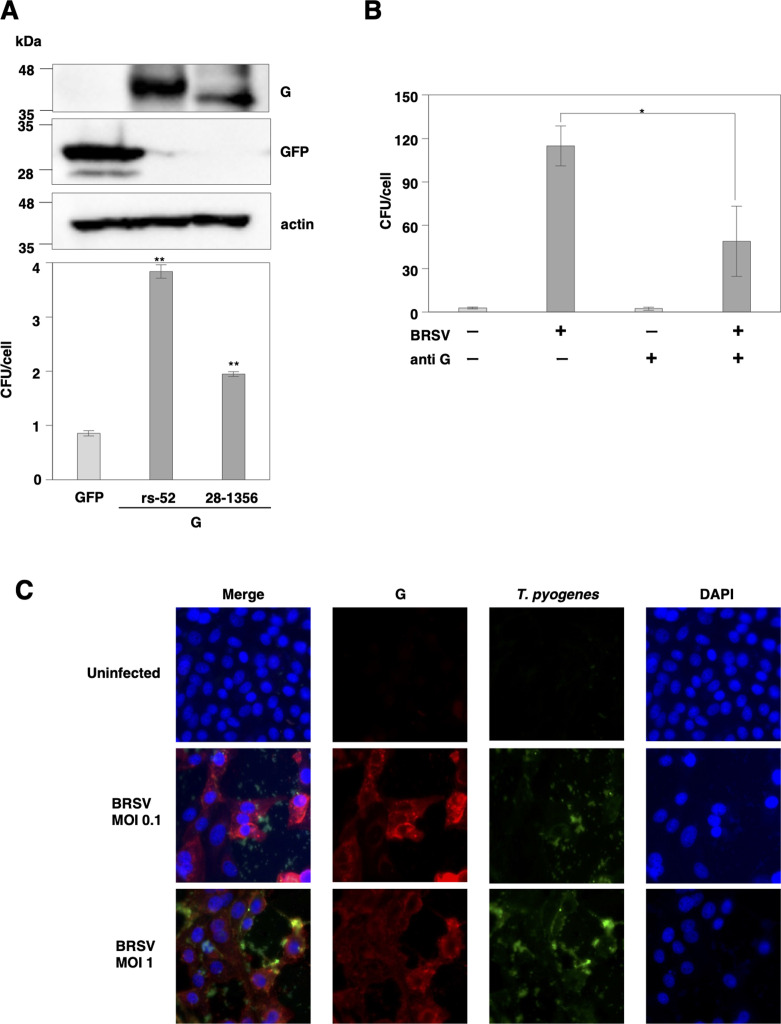Fig. 4.
Glycoproteins of bovine respiratory syncytial virus (BRSV) are related to the enhancement of bacterial attachment. (A) BRSV G protein derived from two strains was exogenously expressed in 293T cells through plasmid transfection. The expression of BRSV G protein in cells was determined by immunoblotting (upper panel). The number of Truperella pyogenes (T. pyogenes) specimens adhering to cells infected with BRSV at an multiplicity of infection (MOI) of 1 for 48 hr was measured by the adhesion assay (lower panel). (B) The number of T. pyogenes specimens adhering to cells infected with BRSV at an MOI of 1 for 48 hr with or without anti-G antibody was measured by the adhesion assay. (C) Fluorescence localization in cells infected with BRSV and bound by FITC- conjugated T. pyogenes (green) was observed with a confocal microscope. BRSV G (red) was stained with an antibody, and nuclei were stained with 4′,6-diamidono-2-phenylindole (DAPI). In all cases, asterisks indicate significant differences (*P<0.05, **P<0.01) versus the results for control cells.

